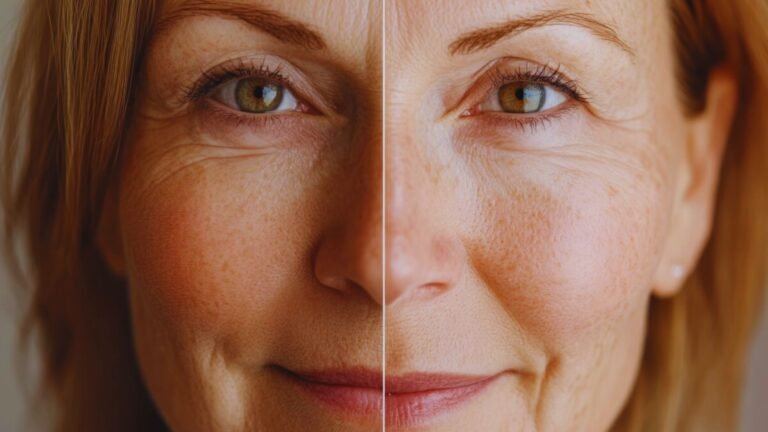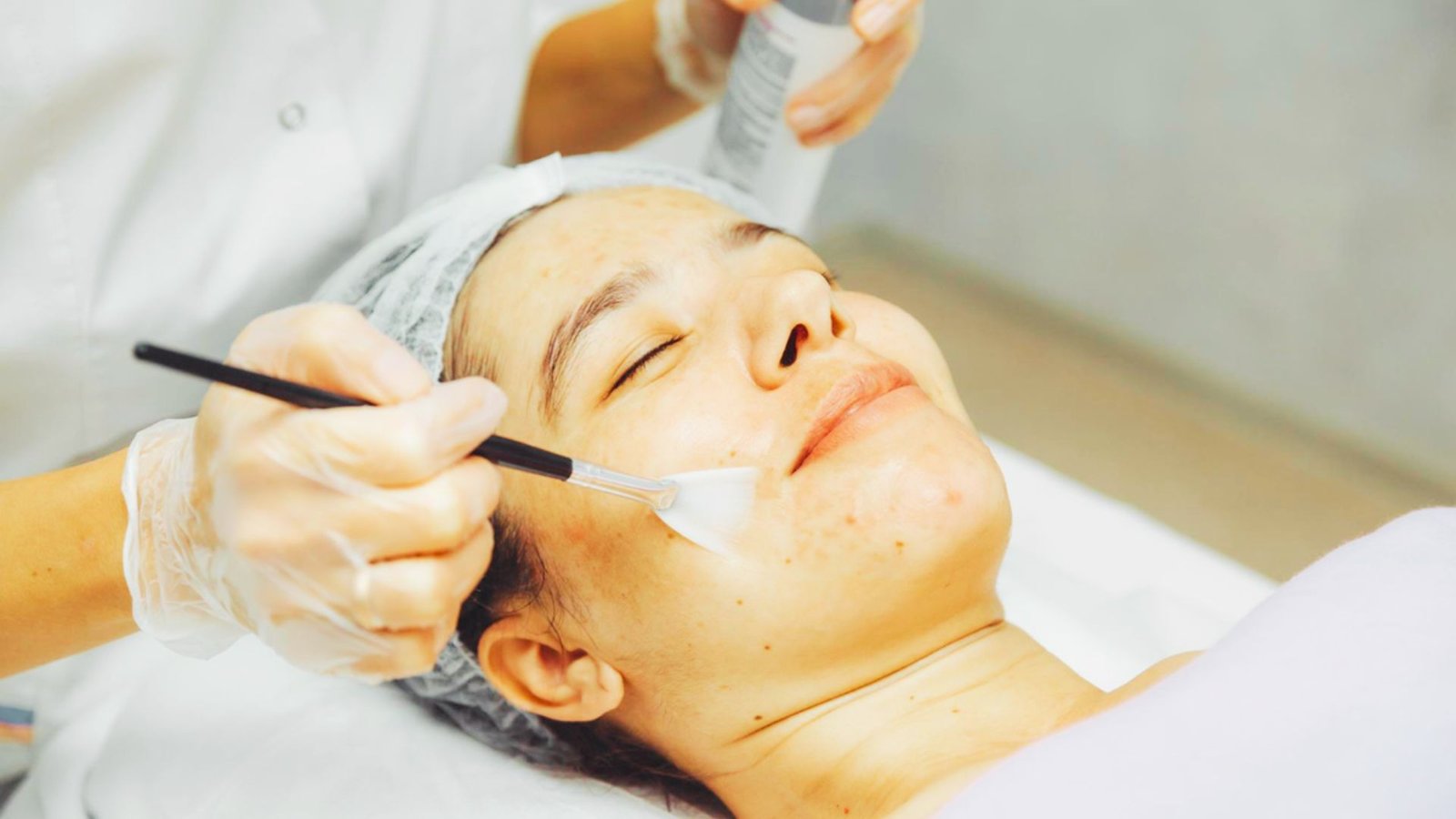How Often Can I Dermaplane for Best Skincare Results

So you’re asking, how often can I dermaplane? I totally understand the confusion. Dermaplaning removes dead skin and peach fuzz, giving you that smooth, glowing face. It’s become super popular, and honestly, it works.
Here’s the problem. Timing is everything. Too much dermaplaning irritates your skin. Too little means you miss the benefits.
I’ve spent years figuring this out on my own skin. I’ve tried different schedules and learned what actually works.
In this guide, I’ll share the perfect dermaplaning frequency for your specific skin type. You’ll learn when to do it, what factors change your schedule, and how to care for your skin afterward.
No guesswork. Just real advice that works. Let’s find your ideal routine.
What Is Dermaplaning?

Dermaplaning is a physical exfoliation method that uses a surgical blade to gently scrape away dead skin cells and vellus hair (that’s the technical term for peach fuzz).
The process is surprisingly simple. An esthetician holds a sterile blade at a 45-degree angle and makes light, feathering strokes across your skin. It sounds scary but it doesn’t hurt at all.
The benefits are impressive. Your skin feels baby-soft immediately after. Your skincare products sink in better because there’s no barrier blocking them. Your makeup glides on smoothly. And that glow? It’s real.
Many people love how it brightens their complexion without harsh chemicals. Plus, it’s instant gratification, which I personally appreciate.
How Often Can I Dermaplane?

The sweet spot is every 4 to 6 weeks. This timing aligns perfectly with your skin’s natural regeneration cycle.
Here’s why this matters. Your skin naturally sheds dead cells and produces new ones on a monthly cycle. When you dermaplane, you’re removing that top layer of dead skin. Your skin needs time to complete its renewal process before you do it again.
Waiting 4 to 6 weeks gives your skin the breathing room it needs. If you dermaplane more frequently, you might strip away healthy skin cells that aren’t ready to shed yet. This can lead to irritation, redness, and sensitivity.
Consistency is key for long-term results. When you stick to a regular schedule, your skin stays smooth and glowing. I’ve found that marking it on my calendar helps me maintain the routine.
Factors That Affect Dermaplaning Frequency
Not everyone’s skin is the same. Your personal dermaplaning schedule depends on several factors.
Skin Type

Normal or combination skin handles dermaplaning beautifully every 4 to 6 weeks. This is the standard recommendation for most people.
Sensitive or dry skin needs more recovery time. If your skin gets red easily or feels tight after cleansing, space out treatments every 6 weeks or longer. Listen to your skin. It will tell you if you’re doing it too often.
Oily or acne-prone skin might actually benefit from slightly more frequent sessions, around every 4 weeks. The exfoliation helps prevent clogged pores. But avoid active breakouts completely.
Skincare Goals

Your goals matter too. Are you maintaining smooth skin year-round? Stick with the regular 4 to 6 week schedule.
Got a wedding or special event coming up? You can time a session for about a week before. This gives your skin time to calm down while still looking fresh and radiant.
Some people dermaplane more frequently in winter when skin feels drier and duller. Others prefer summer sessions for that extra glow.
Lifestyle

Your environment plays a bigger role than you might think. If you live in a city with lots of pollution, your skin accumulates more grime and dead cells. You might benefit from dermaplaning every 4 weeks.
Spend a lot of time outdoors? Sun exposure and wind can make your skin rougher faster. The same goes for high-stress lifestyles. Stress affects how quickly your skin regenerates.
I noticed my skin needed more frequent treatments when I lived in a busy city compared to when I was in a quieter area.
Age

Cell turnover slows down as we get older. In your 20s, your skin regenerates roughly every 28 days. By your 40s and beyond, it can take 45 days or longer.
Mature skin often benefits from more frequent exfoliation to speed up that cell turnover. If you’re over 40, you might find that dermaplaning every 4 weeks keeps your skin looking fresher.
Younger skin usually does well with the standard 4 to 6 week timeline.
Post-Dermaplaning Care Tips

Taking care of your skin after dermaplaning is crucial. Your skin is more vulnerable right after treatment. Follow these steps to protect and improve your results.
Hydration and Moisturizing: Your freshly exfoliated skin absorbs products like a sponge. This is the perfect time to hydrate deeply.
Apply a hydrating serum immediately after dermaplaning. Follow with a rich moisturizer to lock everything in. Hyaluronic acid serums work incredibly well because your skin can actually absorb them now.
Drink plenty of water too. Hydration from inside helps your skin recover faster.
Sun Protection: SPF 30 or higher is non-negotiable. Your skin is more sensitive to sun damage after dermaplaning. The protective layer of dead cells is gone, exposing fresh, new skin.
Apply sunscreen every morning, even if you’re staying indoors. Reapply if you go outside. A sunburn on freshly dermaplaned skin is painful and can cause lasting damage.
I learned this the hard way once. Trust me, don’t skip the sunscreen.
Avoiding Harsh Products: Put away your strong activities for a few days. Retinoids, chemical exfoliants, and acids are too much for your sensitive skin right now.
Wait at least 3 to 5 days before reintroducing these products. Some people wait a full week. Pay attention to how your skin feels.
Skip physical scrubs too. Your skin doesn’t need any more exfoliation for a while.
Gentle Skincare Routine: Keep things simple and soothing. Use a gentle, creamy cleanser without fragrances or harsh sulfates.
Look for products with calming ingredients. Aloe vera, chamomile, and centella asiatica are all excellent choices. Avoid anything that stings or tingles.
Pat your skin dry instead of rubbing. Be extra gentle with everything you do.
When to Avoid Dermaplaning
Sometimes your skin needs a break. There are specific situations where dermaplaning is a bad idea.
- Skip it if you have active acne or any open wounds. The blade can spread bacteria and make breakouts worse. Wait until your skin is completely healed.
- Recently had a chemical peel or laser treatment? Your skin is already in recovery mode. Adding dermaplaning on top would be too much. Wait at least 2 to 3 weeks, or ask your provider for their recommendation.
- Don’t dermaplane over irritated skin, rashes, or sunburn. If your skin is red, inflamed, or painful, postpone your session.
- If you’re taking isotretinoin or have extremely thin skin, talk to a dermatologist first. These conditions make your skin too fragile for dermaplaning.
Professional vs. At-Home Dermaplaning
Choosing between professional treatments and at-home dermaplaning depends on your comfort level, budget, and desired results.
- Professional treatments are the gold standard. Licensed estheticians have proper training and use medical-grade tools. They can see your entire face clearly and work at the correct angle.
- The results are more consistent and thorough. Plus, there’s less risk of cutting yourself or causing irritation.
- That said, at-home dermaplaning is possible if you’re careful. Use tools specifically designed for at-home use. These have safety guards to prevent cuts.
- Always work on clean, dry skin. Use light, feathering strokes at a 45-degree angle. Never press hard or go over the same area multiple times. Watch tutorial videos first if you’re new to it.
- I do both. Professional sessions give me the best results, but I sometimes do light touch-ups at home between appointments.
Conclusion
So, how often can I dermaplane? After years of doing this, I can honestly say the 4 to 6 week schedule changed everything for my skin. But your schedule might look different, and that’s totally okay.
I remember my first session. I was nervous about the blade, but the results were instant. Now it’s part of my regular routine, and I can’t imagine skipping it.
Listen to your skin. It knows what it needs. Start with the standard timeline and adjust from there.
Have questions or want to share your dermaplaning story? Drop a comment below. I read every single one and love hearing from you!
Frequently Asked Questions
Does dermaplaning make hair grow back thicker?
No, this is a myth. Dermaplaning removes fine vellus hair that grows back at the same thickness and texture.
Can I dermaplane if I have acne?
Avoid dermaplaning over active breakouts as it can spread bacteria. You can work around occasional blemishes in small areas.
How long do dermaplaning results last?
Results typically last 3 to 4 weeks until new dead cells accumulate and vellus hair grows back.
Is dermaplaning safe for all skin types?
It’s safe for most skin types, but people with active rosacea, eczema, or severe acne should consult a dermatologist first.
What’s the difference between dermaplaning and shaving?
Dermaplaning exfoliates dead skin cells while removing hair using a surgical blade. Regular shaving only cuts surface hair without exfoliation.










